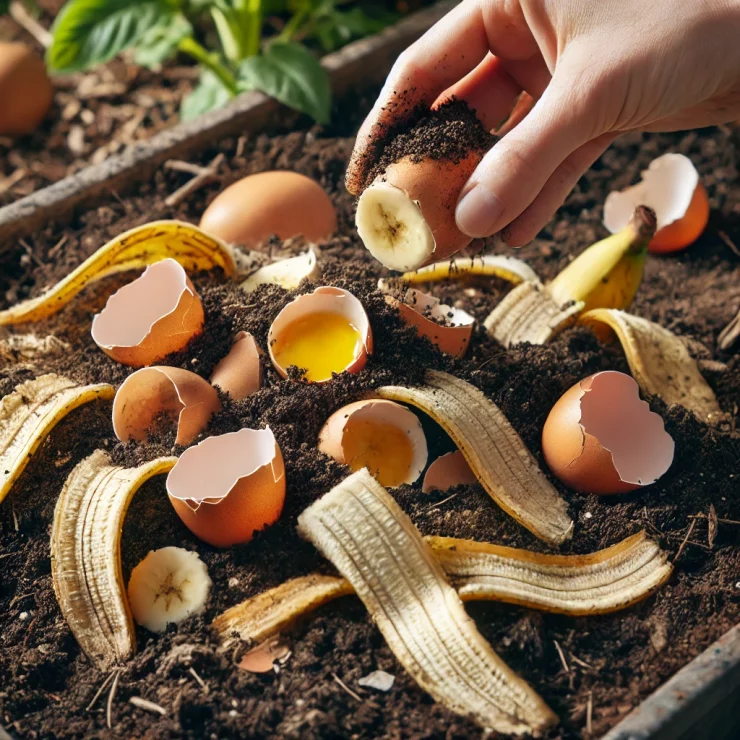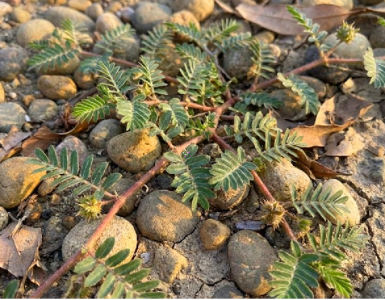A thriving garden starts with healthy, nutrient-rich soil. While commercial fertilizers can be expensive and sometimes contain unwanted chemicals, there are plenty of natural, cost-free alternatives that can enrich your garden soil. By burying certain organic materials directly into your garden, you can enhance soil fertility, improve plant growth, and promote a sustainable gardening practice. Here are nine things you can bury in your garden to enrich the soil with free nutrients.
1.Kitchen Scraps
One of the easiest and most effective ways to enrich your garden soil is by burying kitchen scraps. Items like fruit and vegetable peelings, coffee grounds, eggshells, and tea leaves are rich in essential nutrients such as nitrogen, phosphorus, and potassium. These nutrients are slowly released into the soil as the scraps decompose, feeding your plants over time.
How to Use:
Dig a small trench or hole in your garden bed.
Bury the kitchen scraps about 6-8 inches deep to avoid attracting pests.
Cover with soil and let the scraps decompose naturally.
2.Eggshells
Eggshells are an excellent source of calcium, which is crucial for preventing blossom end rot in tomatoes and peppers. Calcium also helps build strong cell walls in plants, contributing to overall plant health.
How to Use:
Rinse and crush eggshells into small pieces.
Bury them directly in the soil around your plants, or add them to planting holes before transplanting seedlings.
3.Banana Peels
Banana peels are rich in potassium, phosphorus, and magnesium—essential nutrients that promote healthy root development, flowering, and fruiting in plants. Burying banana peels in your garden is an easy way to give your plants a nutrient boost.
How to Use:
Chop banana peels into small pieces.
Bury them a few inches deep in the soil near the base of your plants.
Alternatively, you can place banana peels in the planting hole when transplanting seedlings.
4.Coffee Grounds
Coffee grounds are an excellent source of nitrogen, a nutrient that promotes lush, green growth in plants. They also improve soil structure and attract beneficial worms and microorganisms that help decompose organic matter.
How to Use:
Spread used coffee grounds directly on the soil surface as a mulch, or lightly work them into the top few inches of soil.
Alternatively, bury coffee grounds around the base of nitrogen-loving plants like leafy greens, tomatoes, and roses.
5.Fish Scraps
Fish scraps, including heads, bones, and guts, are a rich source of nitrogen, phosphorus, and trace minerals. These nutrients are essential for plant growth and can help produce vibrant, healthy plants.
How to Use:
Bury fish scraps at least 12 inches deep in your garden to avoid attracting pests and to prevent odor.
Place the scraps at the bottom of planting holes before adding soil and planting.
6.Leaf Mold
Leaf mold, or decomposed leaves, is a valuable soil amendment that improves soil structure, water retention, and nutrient availability. As leaves break down, they release a range of nutrients that plants need to thrive.
How to Use:
Collect fallen leaves and allow them to decompose in a pile or bin over several months.
Once the leaves have broken down into a crumbly texture, bury the leaf mold in your garden beds or use it as a mulch around plants.
7.Wood Ash
Wood ash from a fireplace or wood stove is a great source of potassium and calcium. It can help raise the pH of acidic soils, making it more suitable for a wider range of plants. However, it’s important to use wood ash sparingly, as too much can make the soil too alkaline.
How to Use:
Sprinkle wood ash lightly over your garden soil and mix it in.
Avoid using wood ash around acid-loving plants like blueberries and azaleas.
8.Paper and Cardboard
Unbleached, chemical-free paper and cardboard can be buried in the garden to improve soil structure and provide a slow-release source of carbon. These materials break down over time, adding organic matter to the soil and helping retain moisture.
How to Use:
Shred paper and cardboard into small pieces to speed up decomposition.
Bury the pieces in the soil or use them as a base layer in raised beds or compost piles.
9.Hair and Fur
Human and pet hair, as well as animal fur, are rich in nitrogen, which is essential for plant growth. Hair and fur decompose slowly, providing a long-term source of nutrients for your garden.
How to Use:
Collect hair and fur from hairbrushes or pet grooming sessions.
Bury it directly in the soil around your plants, or add it to your compost pile.
Burying these natural materials in your garden is a simple, cost-effective way to enrich your soil and promote healthy plant growth. By recycling kitchen scraps, garden waste, and other organic materials, you can create a sustainable, nutrient-rich environment for your plants without relying on commercial fertilizers. Give these methods a try, and watch your garden thrive with the power of free, natural nutrients.






Add comment